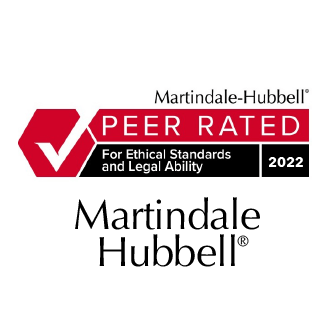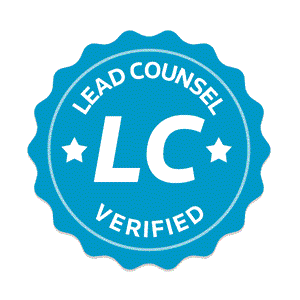Mesothelioma and Asbestos Lung Cancer
Asbestos, a thread-like mineral fiber once used by a number of industries, has now been classified as a carcinogen, meaning it can cause cancers. Exposure to asbestos, even decades ago, carries the risk of lung cancer and mesothelioma, a rare cancer of the lining over some organs. Because of this, with the help of a mesothelioma and asbestos lung cancer lawyer, you may be entitled to compensation if you or a loved one suffered illness due to asbestos exposure. Contact Perez Law Group, PLLC with your story and a member of our Glendale, Arizona team will get you started on your case.
In the years since the risks of asbestos came to light, almost 70 countries have banned its use. Unfortunately, the United States isn’t one of them, leading millions of Americans to continue to be exposed to a known carcinogen. Because the risk is well known, those who suffer adverse health effects from asbestos can file lawsuits to pursue compensation that may help with medical bills, lost wages, and pain and suffering.
Understanding Asbestos
Asbestos is actually an umbrella term for six fibrous minerals that can be easily woven into materials. In addition to its convenient composition, asbestos has a high tensile strength while being a poor conductor, meaning it can withstand a lot of pressure and heat. This made it ideal for building materials as well as car parts, and for decades it became the go-to miracle product in several industries.
Where Asbestos Is Found
While many asbestos products have been removed or contained, they can still be found in older homes, buildings, or specific equipment. However, because asbestos effects can be felt years after exposure, you may have been exposed to products that are now banned or have been changed to remove the mineral.
Asbestos may be found in:
- Building materials: roofing, ceiling tiles, insulation, flooring, sheetrock, paint, soundproofing, boilers
- Consumer products: fertilizer, hairdryers, talcum powder, vermiculite, cigarettes
- Scientific equipment: Gloves, laboratory hoods, countertops and tables
- Industrial material: rope, packing materials, cables and wires, pipes, electrical panels
- Car parts: brake pads, brake lines, clutches, gaskets
- Fire resistant products: Fire blankets, fire-proofing sprays, fire curtains, fire doors
There are other potential sources of exposure, and you should consult your asbestos personal injury lawyer to determine what may have contributed to your condition.
Why Asbestos Poses a Risk
This multitasking mineral’s greatest strength is also its greatest risk to humans: its lightweight fibers. When disturbed, asbestos can release those fibers in microscopic quantities into the air, making them easy to swallow or inhale. Moving, cleaning, or installing a product that contains asbestos can release these fibers, unbeknownst to any person in the vicinity, as asbestos is odorless and tasteless.
Once these fibers are in the human body, they become irritants, causing inflammation and scarring. Imagine when you have irritated skin or eyes from fiberglass splinters — the slivers are almost imperceptible yet can leave a rash and inflammation. Now imagine even smaller splinters, stuck to the lining of your lungs, causing irritation there. And unlike fiberglass, asbestos can remain lodged in your system for years.
Over time, these fibers pose a risk of cancer. According to the Occupational Safety & Health Administration (OSHA), there is no safe level of asbestos exposure, yet the U.S. continues to import the mineral. In fact, from 2017 to 2018, asbestos imports more than doubled from 332 metric tons to 750, according to the U.S. Geological Survey (USGS).
Determining Who Is at Risk
Products and materials containing asbestos were manufactured, sold, and used into the 1980s, meaning there are several avenues for exposure for any American. However, the highest risks are associated with a number of particular industries and occupations, including:
- Construction
- Demolition
- Auto repair
- Shipyards
- Power plants
- Railroads
- Oil refineries
- Mining
- Insulation
- Roofing
Even now, with bans on a number of products, American workers in some of these industries are still exposed to asbestos regularly. If you worked in any of these fields and developed illnesses associated with asbestos, you could be entitled to compensation.
Military Personnel
Of the 3,300 new cases of mesothelioma recorded annually in the United States, a third of those are among veterans, according to the U.S. Department of Veterans Affairs (VA). This is because of the prevalence of asbestos use in all types of military equipment, including ships, tanks, trucks, and planes.
The Agency for Toxic Substances and Disease Registry (ATSDR) specifically notes the risk for Navy personnel, as they were often in close quarters and working on pipes made from the material. The VA suggests being tested for lung illnesses if you served in the military and worked in areas such as:
- Mining
- Milling
- Shipyards
- Construction
- Carpentry
- Demolition
- Flooring
- Roofing
- Cement sheet
- Pipes
- Insultation
- Friction products
Some of these industries were included above in the list of general industries that posed a risk. For veterans who were only in known contact with asbestos during their service, they may be able to receive specific benefits for asbestos-related illnesses.
Family Members
Unfortunately, because of how small asbestos fibers are, workers or military personnel can bring them home on their clothes, hair, or skin. This then spreads the exposure to members of the same household. Since OHSA has pointed out that there is no level of exposure that is unharmful, loved ones can be put at risk for lung cancer, mesothelioma, and other diseases by association.
How Asbestos Causes Cancer and Other Illnesses
Asbestos fibers embedded in the body can cause the eventual development of cancers. However, symptoms and conditions can manifest decades after exposure. Moreover, the diseases associated with asbestos extend beyond cancer.
Types of Cancer
The two cancers definitively linked to asbestos are lung cancer and mesothelioma, which develops in the lining of the lungs as well as around other organs. While asbestos is one of several factors that can lead to lung cancer, asbestos is currently the only external factor linked to mesothelioma. That means if you develop mesothelioma, there is a chance asbestos exposure contributed to it.
The forms of cancer known to by caused by asbestos are:
- Lung
- Pleural mesothelioma
- Peritoneal mesothelioma
- Pericardial mesothelioma
- Testicular mesothelioma
While pleural mesothelioma, which affects the lining around the lungs, is more common, it is possible to develop it in the lining of the abdomen (peritoneal), the lining around the heart (pericardium), or the lining around the testicles (testicular).
Other cancers have been linked or are suspected to be linked to asbestos, according to the American Cancer Society:
- Ovarian
- Laryngeal
- Colon
- Rectum
- Pharyngeal
- Stomach
While studies have not made definitive links between these cancers and asbestos, exposure to the mineral may play a role. Discuss how your cancer may be linked to asbestos with your doctor as well as your lawyer.
Other Illnesses
Asbestos is a foreign irritant in the body and can therefore cause benign conditions that still greatly impact health, including:
- Asbestosis
- COPD
- Pleural plaques
- Pleural thickening
- Pleural effusions
These conditions are centralized in the lungs, and generally involve scarring or inflammation of lung tissue. While not as deadly as cancer, asbestos-related illnesses still have an effect on victims’ lives, costing money for care and even impacting ability to perform at work. As a result, you may receive compensation for these conditions just as you would for cancer.
Risk Factors
Since smoking can damage the lungs further, it represents an increased risk for developing lung cancer. Consequently, smokers exposed to asbestos are encouraged to quit. Radiation exposure also puts people more at risk for developing lung cancer.
That being said, even if you are or were a smoker and developed lung cancer after exposure to asbestos, do not assume this disqualifies you from pursuing damages. Contact your Glendale asbestos and lung cancer attorney to learn how to fight for compensation.
We Stand Up for Your Right to Seek Damages
Developing asbestos-related conditions entitles you to pursue compensation. Damages cannot undo the exposure, but it can help you pay for the costs associated with your condition:
- Medical bills
- Surgeries
- Treatments
- Prescription medication
- Medical devices
- Lost wages
- Pain and suffering
- Loss of companionship
- Therapy and counseling
If your loved one was claimed by one of these illnesses, you can pursue damages on their behalf through a wrongful death claim. This can provide funds for their bills as well as funeral costs, burial expenses, and the income and support the deceased provided.
Exposure to asbestos does more than damage lungs. It damages lives. You deserve justice for that, and therefore have a right to claim damages.
Call Our Team if Asbestos Caused Your Illness
If asbestos contributed to your lung cancer or mesothelioma, you have a right to pursue damages. Since these cases may span decades, states, and occupations, a mesothelioma and asbestos lung cancer lawyer can help guide you through the process. The team at Perez Law Group, PLLC is ready to answer your questions, review your story, advise you of your options, and support you on your journey to compensation. Call today: (602) 730-7100 or fill out the form below.














